Big changes have been taking place on Conor Casey’s farm. Two robots have already been installed, the first in early October 2018. The third robot is to be installed after spring and at that stage the whole herd will be milked by robots.
“We’re making the move to robots gradually, over about six months. It suits us from a tax point of view, but it also gives the cows time to adjust. Freshly calved cows are milked in the parlour for the first few days and are then trained to the robot. We’re still milking about 40 late-calving cows through the parlour but when they’re dried off, the parlour will be shut down and replaced by another robot,” Conor says.
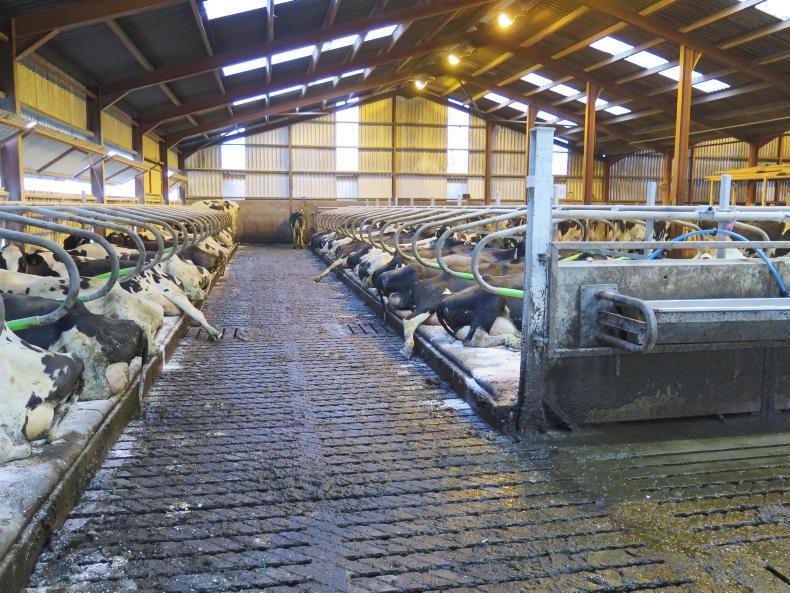
Conor Casey's cows are all very content.
The Caseys are milking around 160 high-yielding Holstein Friesian cows at Loughguile, near Ballymena in Co Antrim. The herd is housed all year round. Conor and his father Cahal were zero-grazing grass into the herd during the growing season, but have since sold the zero grazer and are now just making silage.
“We liked the zero grazer but the problem was we couldn’t rely on it. Our land is steep and heavy and getting out with the tractor and zero grazer was unreliable. At least with silage we can pick the days we’re going to cut it. We aim for four cuts a year.”
The herd averaged 11,536 litres of milk per cow for the last 12 months. At a fat level of 3.77% and a protein of 3.2%, it equates to 828kg of milk solids per cow. Milk from forage, a measure of efficiency used in Northern Ireland, is 3,441 litres per cow. These are all impressive figures, which Conor attributes to putting emphasis on fertility when it comes to sire selection. Concentrate feeding levels are high, at 3.96t of meal per cow, or 0.34kg of meal per litre of milk.

The extension to the shed is well finished.
Build
A 20ft extension to two existing cubicle sheds was built to house the robots. The third will be integrated into the existing collecting yard which is adjacent to a cubicle shed. All three sheds are side by side. One of the sheds was for heifers, but these cubicles were widened and lengthened with new cubicles installed. A gel-based cubicle mat was installed and this shed now houses the older and higher yielding cows.
The existing cubicle shed houses the younger cows, first and second calvers, while the soon-to-be-converted shed will house freshly calved cows and will have a guided training area. The finish to the building work is impressive. Conor opted for timber space boarding on the gable end and rough edge concrete block wall on the exterior.
There is a training area at each robot which allows Conor to keep three or four cows near the robot and get them used to going in and out. The cows get access to the feed head and four cubicles. The whole layout was designed by Conor’s brother Declan, who works for GEA and the robots were installed by McKnight Dairy Services.
Unlike any other robotic milking system that I have seen, the GEA robot operates with a milking pit so the operator steps down into the pit if he or she needs to do anything with the cow, eg training or drying off. The cow’s udder is at the same height as it would be in a milking pit.
The robot can be operated in manual mode when training a cow, with the clusters attached by hand. When in automatic mode, the clusters are attached by electrically operated arms, not air like in other makes. Also, the cleaning and disinfecting mechanism is all in the cluster, so there are no separate cleaning brushes or teat sprayers.
When the cow walks into the box, the gate closes behind her and she is offered feed as the 5G camera attaches the clusters. The teats are washed with water, disinfected and the first few strips of milk are discarded before the rest of the milk enters the bulk tank. The teats are disinfected after milking.
Average attachment time is 39 seconds. Average box time (the average time spent in the robot per cow) is seven minutes and 33 seconds. The cows are currently being milked an average of 2.8 milkings per day doing 13.9l of milk per milking. The two robots are harvesting 4,200l of milk per day.
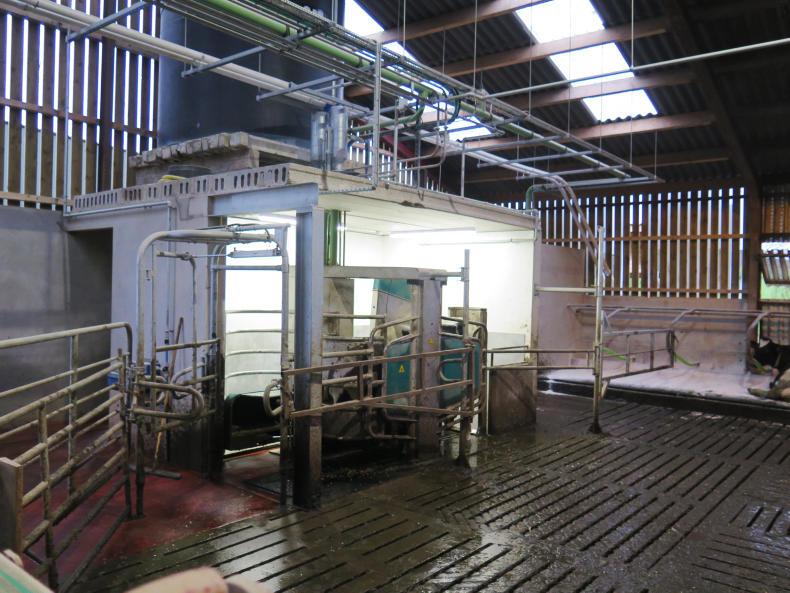
One of the three robots in Conor Casey's yard.
Feed
Two different feeds can be fed through the robot. Conor is feeding 7kg of 18% crude protein blend through the diet feeder.
After calving, cows are fed a 16% crude protein nut through the robot for the first 40 days. This changes to a 20% protein nut for the next 20 days.
After that, cows are fed on a feed-to-yield basis on a rate of 0.45kg of meal per litre of milk over 28l per day. Cows milking below 50l per day get the high-protein nut, while those milking above 50l per day get the low protein nut.
Conor’s daily routine is to get up at 6am and gather any cows that are late going into the robot. He then pushes up the silage to the rest of the cows, cleans the cubicles, changes the milk socks, cleans the camera on the robot and checks that everything is going OK.
At the moment, Cahal is doing most of the milking and herdsman Peter Gillespie is doing the feeding.
The cows are fed once a day. Cubicles are cleaned twice a day.
Conor uses a mix of sawdust and hydrated lime, which is spread on the beds twice a week and scraped down twice a day when cleaning the beds.
All the floors in the shed are slatted and scraped by a Lely robotic scraper.
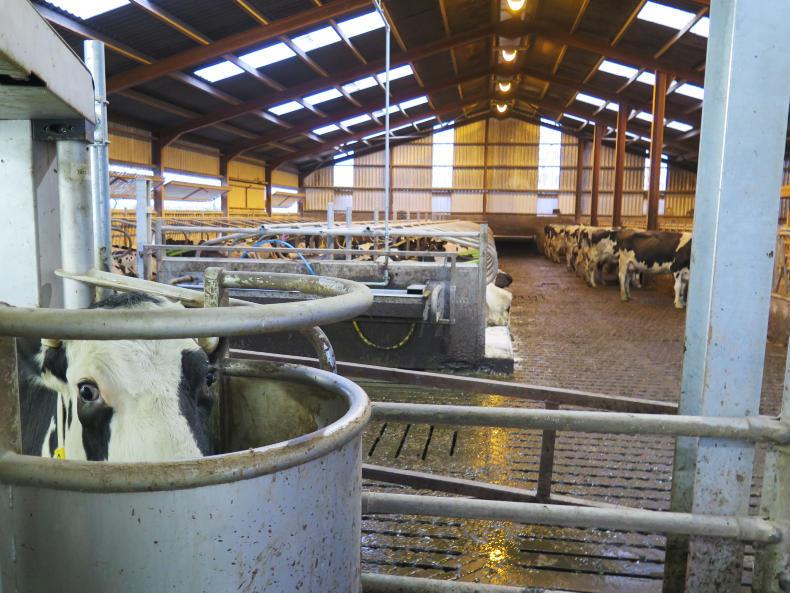
Cows are trickle-fed meal throughout the milking.
Costs
Conor says the three robots cost £250,000 (€280,000), including a buffer tank and air compressor.
Because the robots operate an electric arm, Conor says the energy usage is low and expects electricity costs to be less than when milking in the parlour. Building work came to £50,000 (€56,000).
Despite running a high-input system, the Casey farm is quite profitable. In the 12 months up to last October, the total income was 27.49p/l.
Variable costs are 15.25p/l while fixed costs, excluding family labour but including 2.71p/l for depreciation is 8.82p/l, leaving a margin of 3.42p/l. Conor says costs went up 2p/l due to the bad weather in autumn 2017 and spring 2018.
Read more
Watch: most impressive cubicle sheds of 2018
Robot on a grass-based system
Big changes have been taking place on Conor Casey’s farm. Two robots have already been installed, the first in early October 2018. The third robot is to be installed after spring and at that stage the whole herd will be milked by robots.
“We’re making the move to robots gradually, over about six months. It suits us from a tax point of view, but it also gives the cows time to adjust. Freshly calved cows are milked in the parlour for the first few days and are then trained to the robot. We’re still milking about 40 late-calving cows through the parlour but when they’re dried off, the parlour will be shut down and replaced by another robot,” Conor says.

Conor Casey's cows are all very content.
The Caseys are milking around 160 high-yielding Holstein Friesian cows at Loughguile, near Ballymena in Co Antrim. The herd is housed all year round. Conor and his father Cahal were zero-grazing grass into the herd during the growing season, but have since sold the zero grazer and are now just making silage.
“We liked the zero grazer but the problem was we couldn’t rely on it. Our land is steep and heavy and getting out with the tractor and zero grazer was unreliable. At least with silage we can pick the days we’re going to cut it. We aim for four cuts a year.”
The herd averaged 11,536 litres of milk per cow for the last 12 months. At a fat level of 3.77% and a protein of 3.2%, it equates to 828kg of milk solids per cow. Milk from forage, a measure of efficiency used in Northern Ireland, is 3,441 litres per cow. These are all impressive figures, which Conor attributes to putting emphasis on fertility when it comes to sire selection. Concentrate feeding levels are high, at 3.96t of meal per cow, or 0.34kg of meal per litre of milk.

The extension to the shed is well finished.
Build
A 20ft extension to two existing cubicle sheds was built to house the robots. The third will be integrated into the existing collecting yard which is adjacent to a cubicle shed. All three sheds are side by side. One of the sheds was for heifers, but these cubicles were widened and lengthened with new cubicles installed. A gel-based cubicle mat was installed and this shed now houses the older and higher yielding cows.
The existing cubicle shed houses the younger cows, first and second calvers, while the soon-to-be-converted shed will house freshly calved cows and will have a guided training area. The finish to the building work is impressive. Conor opted for timber space boarding on the gable end and rough edge concrete block wall on the exterior.
There is a training area at each robot which allows Conor to keep three or four cows near the robot and get them used to going in and out. The cows get access to the feed head and four cubicles. The whole layout was designed by Conor’s brother Declan, who works for GEA and the robots were installed by McKnight Dairy Services.
Unlike any other robotic milking system that I have seen, the GEA robot operates with a milking pit so the operator steps down into the pit if he or she needs to do anything with the cow, eg training or drying off. The cow’s udder is at the same height as it would be in a milking pit.
The robot can be operated in manual mode when training a cow, with the clusters attached by hand. When in automatic mode, the clusters are attached by electrically operated arms, not air like in other makes. Also, the cleaning and disinfecting mechanism is all in the cluster, so there are no separate cleaning brushes or teat sprayers.
When the cow walks into the box, the gate closes behind her and she is offered feed as the 5G camera attaches the clusters. The teats are washed with water, disinfected and the first few strips of milk are discarded before the rest of the milk enters the bulk tank. The teats are disinfected after milking.
Average attachment time is 39 seconds. Average box time (the average time spent in the robot per cow) is seven minutes and 33 seconds. The cows are currently being milked an average of 2.8 milkings per day doing 13.9l of milk per milking. The two robots are harvesting 4,200l of milk per day.

One of the three robots in Conor Casey's yard.
Feed
Two different feeds can be fed through the robot. Conor is feeding 7kg of 18% crude protein blend through the diet feeder.
After calving, cows are fed a 16% crude protein nut through the robot for the first 40 days. This changes to a 20% protein nut for the next 20 days.
After that, cows are fed on a feed-to-yield basis on a rate of 0.45kg of meal per litre of milk over 28l per day. Cows milking below 50l per day get the high-protein nut, while those milking above 50l per day get the low protein nut.
Conor’s daily routine is to get up at 6am and gather any cows that are late going into the robot. He then pushes up the silage to the rest of the cows, cleans the cubicles, changes the milk socks, cleans the camera on the robot and checks that everything is going OK.
At the moment, Cahal is doing most of the milking and herdsman Peter Gillespie is doing the feeding.
The cows are fed once a day. Cubicles are cleaned twice a day.
Conor uses a mix of sawdust and hydrated lime, which is spread on the beds twice a week and scraped down twice a day when cleaning the beds.
All the floors in the shed are slatted and scraped by a Lely robotic scraper.

Cows are trickle-fed meal throughout the milking.
Costs
Conor says the three robots cost £250,000 (€280,000), including a buffer tank and air compressor.
Because the robots operate an electric arm, Conor says the energy usage is low and expects electricity costs to be less than when milking in the parlour. Building work came to £50,000 (€56,000).
Despite running a high-input system, the Casey farm is quite profitable. In the 12 months up to last October, the total income was 27.49p/l.
Variable costs are 15.25p/l while fixed costs, excluding family labour but including 2.71p/l for depreciation is 8.82p/l, leaving a margin of 3.42p/l. Conor says costs went up 2p/l due to the bad weather in autumn 2017 and spring 2018.
Read more
Watch: most impressive cubicle sheds of 2018
Robot on a grass-based system










 This is a subscriber-only article
This is a subscriber-only article









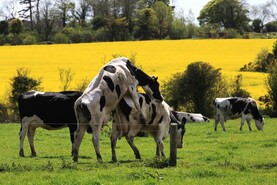
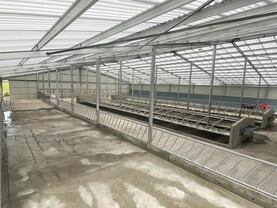
SHARING OPTIONS: